This Indian Norwegian Textile Designer Blurs the Line Between Fashion and Art

Young designers are often told to carve out a specific niche, but Helena Bajaj-Larsen’s background is too wide and her ambition too large to be hemmed in by conventional wisdom. The 24-year-old textile designer is based between Paris, Dubai, and Mumbai, and her work draws on at least three cultures. The textiles she creates—based on traditional Indian natural fiber “khadi” fabrics—are used for a collection of refined ready-to-wear and home goods sold under her eponymous label. The fabrics are dyed and painted by hand for a multidimensional effect that calls to mind abstract expressionism.
Those who own her streamlined trenches and exquisite abayas say they feel like they are wearing a piece of art, and that’s precisely the vibe Bajaj-Larsen is going for. In the age of mass printing, there are quicker ways to complete a pattern, but she believes that the creative deep dive necessary to produce her textiles results in a more original product. “[It is] like fabricating the skin of a garment cell by cell. You are composing an image using color, line, pattern, and you get to decide how you create a balance between these elements,” she shared via email from Paris. “It feels like a meeting place between fashion and art in the most literal sense.”
Bajaj-Larsen grew up with art. Her mother is the acclaimed painter Sujata Bajaj and her father, Rune Jul Larsen, is a Norwegian academic. Raised in Paris, she has been immersed in cultural life since birth. “While most of my friends would go to the countryside over the weekend, our family activities would consist of gallery openings, art fairs, previews, [and] studio visits,” says Bajaj-Larsen. “I was without fail always the only kid in the room but quickly developed a fascination for all these creative individuals or ‘characters’ as I liked to call them, each more interesting than the next: the clothes, the stories.”
A meticulous planner, Bajaj-Larsen studied every aspect of the fashion industry before she entered it. Her research on design schools led her to Parsons. While there, she completed an embroidery internship at Mary Katrantzou and moonlighted as an assistant with other fashion houses. “It helped me understand just how much I wanted to focus on fabric development within my work.” She continued her textile studies at Central Saint Martins in London during a semester abroad. “I didn’t even make a single garment that semester, [it was] all surface design work,” she says.
Selected for the CFDA’s Fashion Future graduate showcase prior to her graduation in 2017, Bajaj-Larsen was then handpicked for a design fellowship with Donna Karan’s Urban Zen and Rihanna’s Clara Lionel Foundation once she completed her studies. The collaboration saw her working in conjunction with local artisans in Port-au-Prince, Haiti, to create collections of home goods. Both experiences gave her the chance to interact with some of fashion’s most influential creatives from Fern Mallis and Sara Maino to the Dutch trend forecaster Lidewij Edelkoort.
“I have been blessed to have met multiple industry veterans who were kind enough to take the time to sit down with me and look at my work,” says Bajaj-Larsen. “They all seemed to agree there was another realm to explore using the same creative identity: something beyond the somewhat restrictive scale of ‘fashion design’ in a traditional sense. I look forward to seeing how this will manifest itself in the future. Who knows, perhaps the brand will be a surface design studio catering to multiple fields.”
At present, Bajaj-Larsen is busy with her latest collection, a forthcoming furniture collaboration, and plenty of orders from private clients. Her versatility has already opened up a lot of different creative paths. “At this stage, I am open to anything and am trying to be as diverse as possible in the projects I take on,” she says. “Hopefully, this is how I will continue to learn new things and grow the brand in a steady, sustainable manner.”
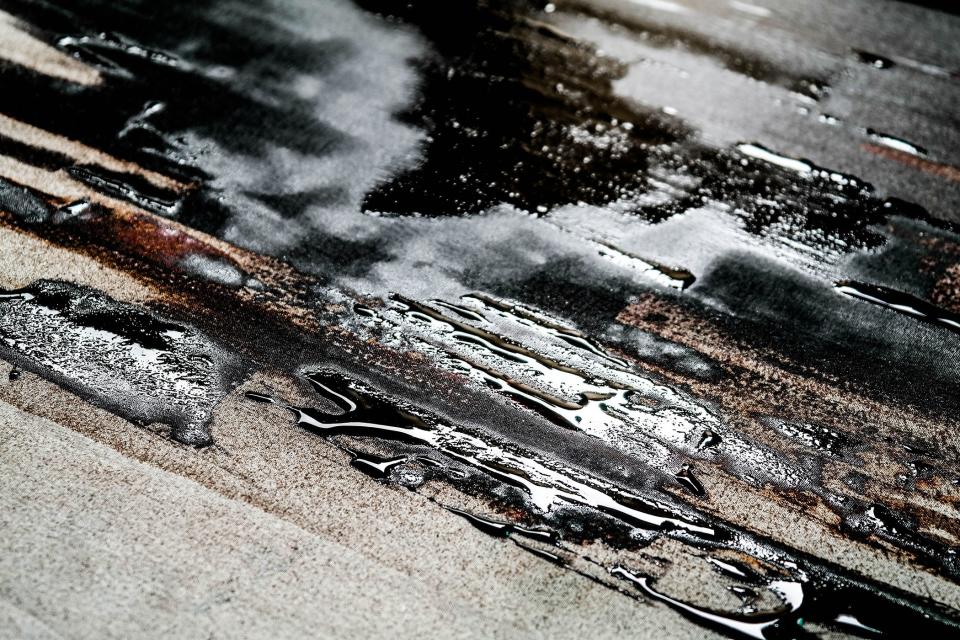
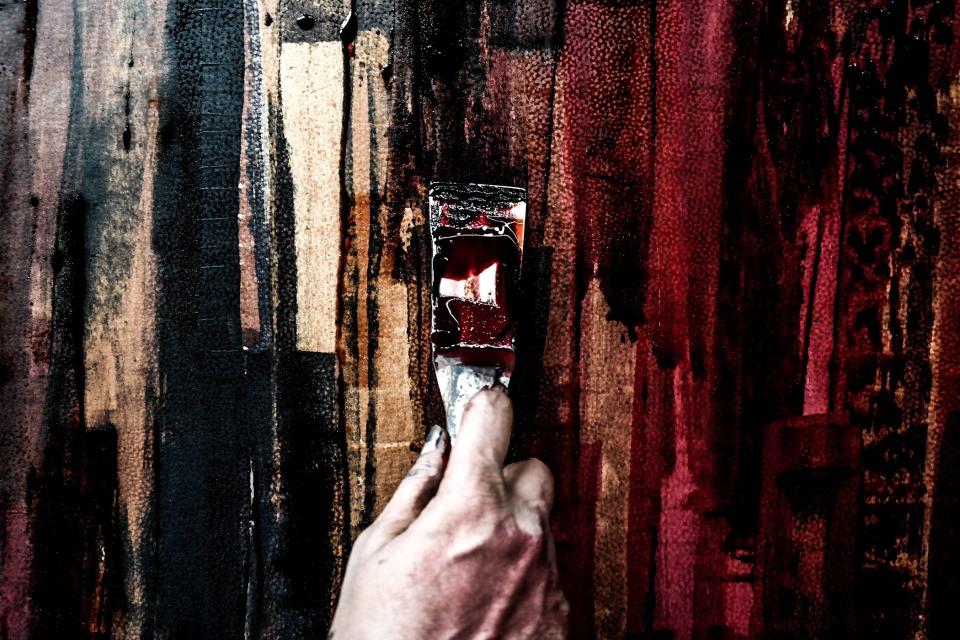

“I would get frustrated with the prints and fabrics available in stores when I was sourcing for college projects. Everything looked the same. The colors didn’t have enough depth, the patterns felt endlessly repetitive: geometrics, animal, florals. I would pick up these pieces and try to alter them as much as possible through various techniques, be it embroidery, paint, laser cutting, etching, appliqués, fusing.”
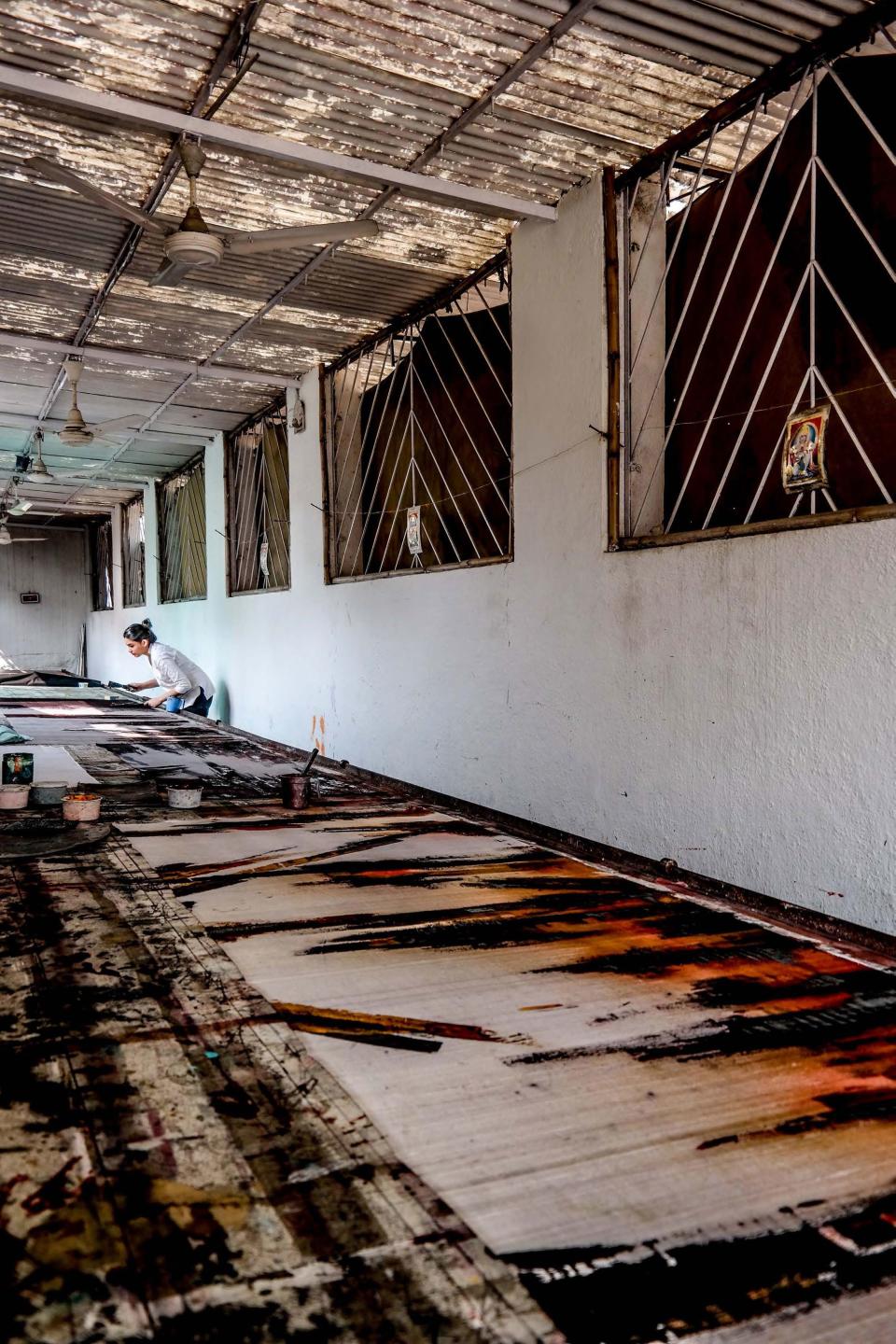
“It starts with yardage—white silk laid out on long tables, 20 meters at a time. Acid dyes come first; we make a crazy amount of batches, the likes of 10 reds, five browns, 10 yellows, 10 oranges. I am a bit nutty when it comes to color variants. The more there are, the greater the depth of the print, so I make sure not to compromise on this. The tools that are used encompass spades, brushes, sponges, sprays—this also allows for a more varied and richer outcome than if we used one method.”
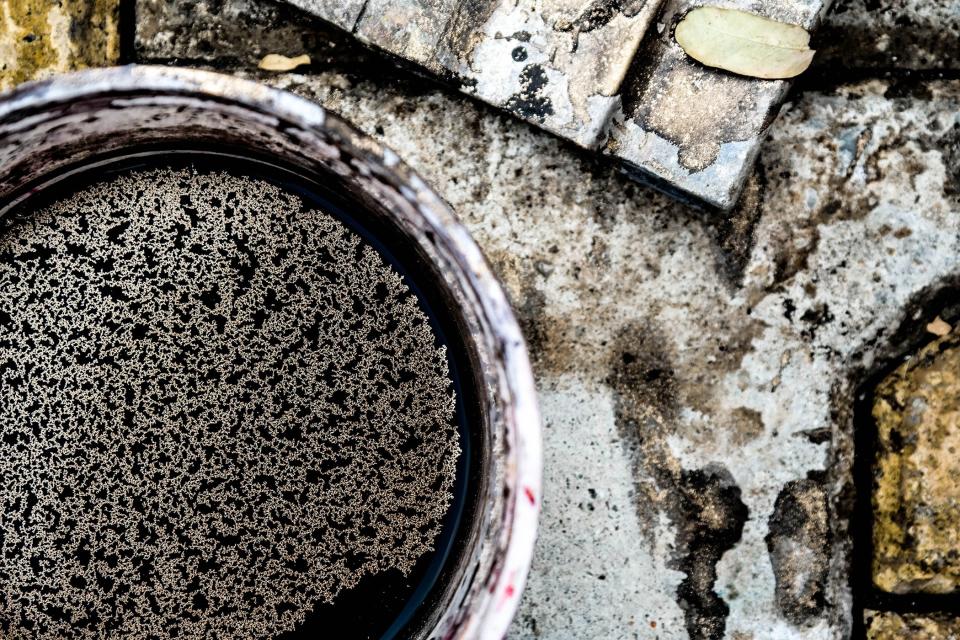

“After this the fabric goes for steaming, washing, and drying. The second round begins as the material is pinned back onto the tables—then the details are added in black and gold and silver pigment paints. Just a few strokes here and there. This allows me to highlight aspects of the print and also add texture as the pigment lines have a different feel on the fabric. There is definitely a science to all of it, but it is an incredible process that I fell in love with over the years.”
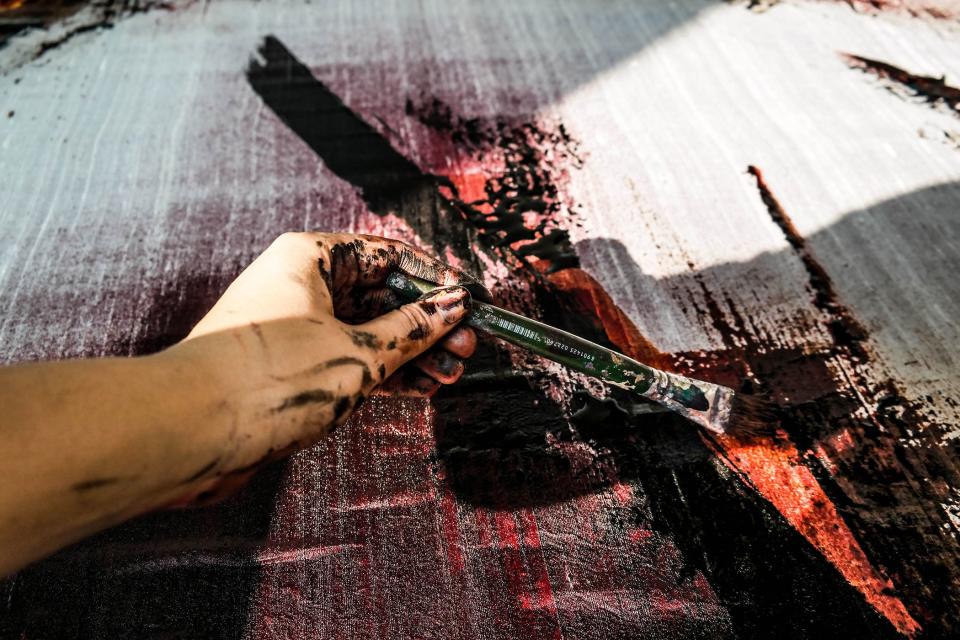
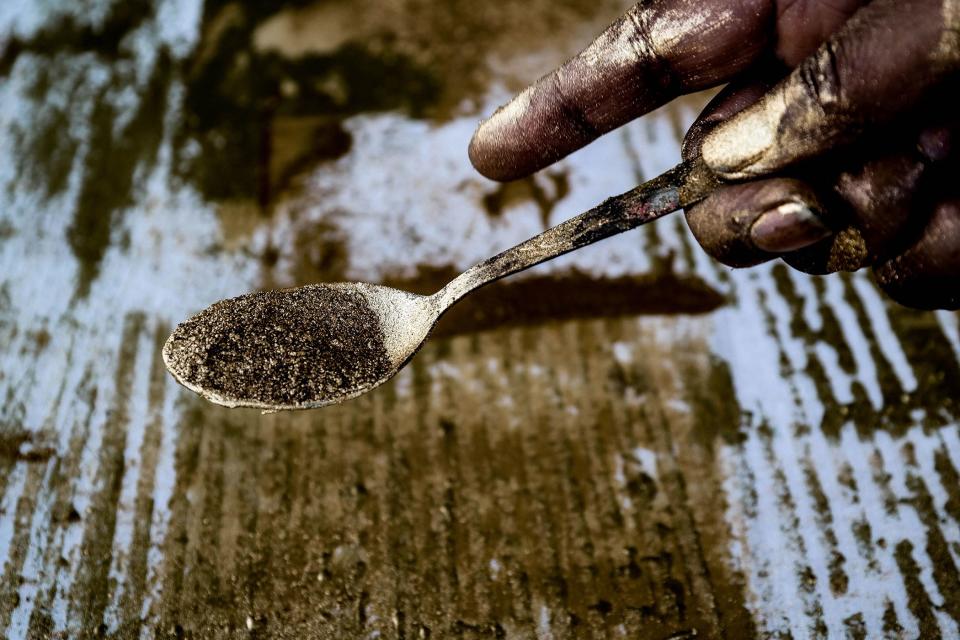
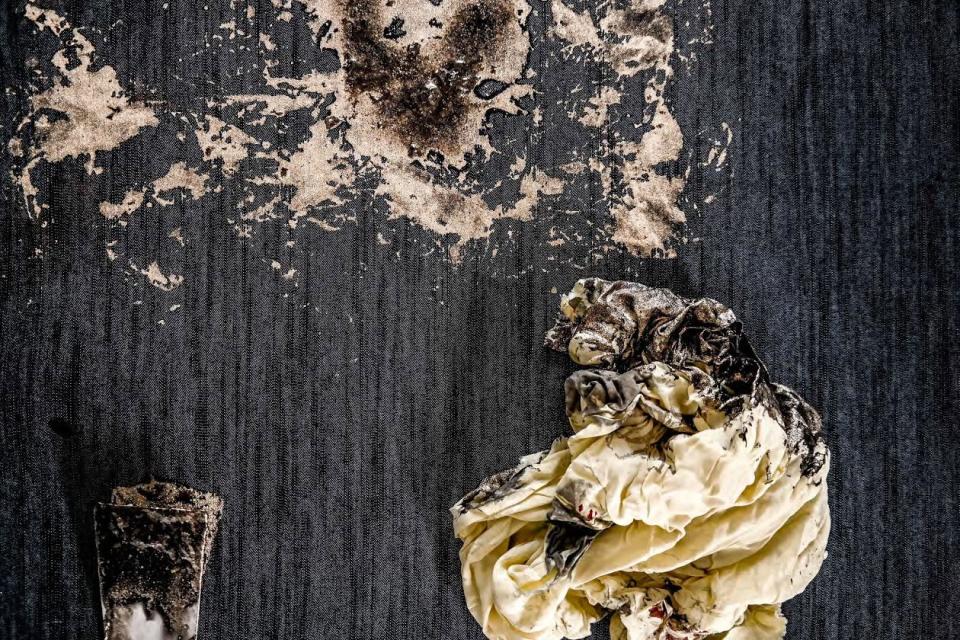
“I still make every fabric and there is no digital printing or screen printing involved—each piece is a one-off, and my hope is that the client will view it as a collectible item they cherish rather than acquiring yet another garment. The attention to detail is what is most unique to the brand; each inch of the piece is ‘visually calculated.’”
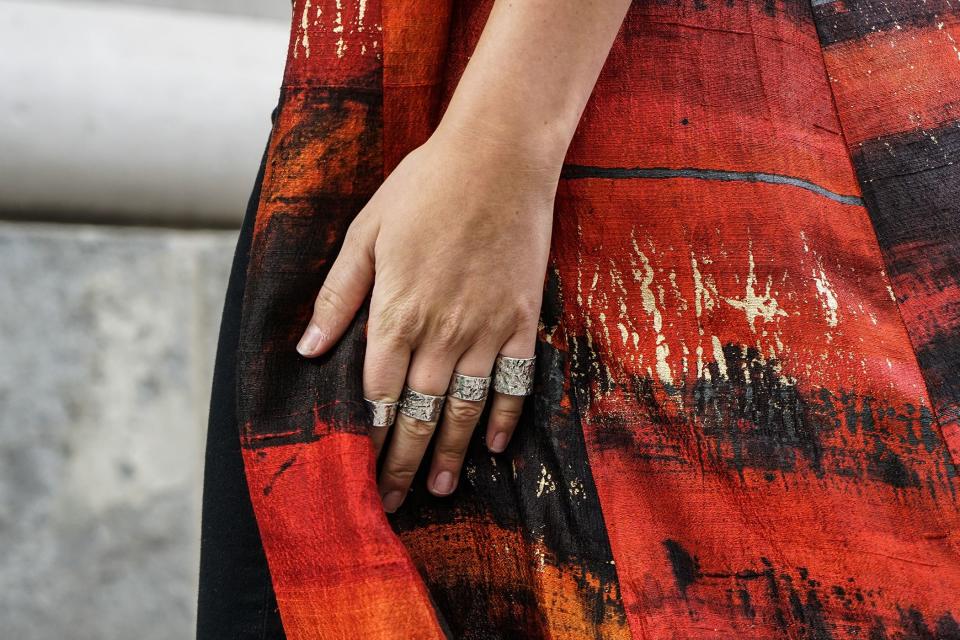
“I started designing jewelry on the side when I was in my last year at Parsons as part of an elective—it was one of my favorite classes and became a space of relief from the uber-intense thesis environment. In terms of design, I use the same approach as I would with a piece of fabric. By this, I mean the shapes are simple and it is all about surface work—lots of different techniques are applied, be they overheating, etching, hammering, reticulation, granulation.”
“It starts with a single slab of metal (mostly sterling silver), and then slowly as we play with it and land on a texture we like, we then take the slab and bend it into a minimal design: cuffs, earrings, rings, neckpieces. Far from dainty, they are more like body sculptures—very raw and highly experimental. I didn’t intend for it to evolve into anything necessarily. Still, later on, it became an integral part of the brand as the response to the product was overall very positive.”
Originally Appeared on Vogue

